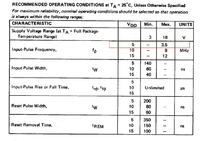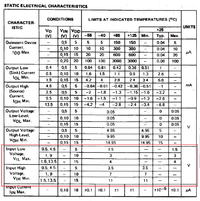TriggerHappy
Junior Member level 3
Seems fairly simple. The Oscillator has 1 output pin. 1 Vdd pin. 1 GND pin.
But I can't make it swing. Output is 0v. If it did oscillate, a volt meter would read about 2.5v as in 5v half the time and 0v half the time, right?
Do I need to use a capacitor?
How should I connect it?
What value should it have? The only two data in this system are 5v and 20 MHz, so what is the formula to determine capacitance?
Once I get the oscillator to... oscillate, I want to connect it to a ripple counter. Is that straight forward between the out pin of the oscillator and the clock pin of the ripple counter?
Oscillator JCO, 20 MHz, 5v
http://www.jauch.de/ablage/med_00000197_1182498208_prd_00000039_en_JCO-5V0.pdf
(I've also tried a 9.8304MHz oscillator with the same result)
Ripple counter CD4020BE
http://www.ti.com/lit/ds/symlink/cd4040b.pdf
But I can't make it swing. Output is 0v. If it did oscillate, a volt meter would read about 2.5v as in 5v half the time and 0v half the time, right?
Do I need to use a capacitor?
How should I connect it?
What value should it have? The only two data in this system are 5v and 20 MHz, so what is the formula to determine capacitance?
Once I get the oscillator to... oscillate, I want to connect it to a ripple counter. Is that straight forward between the out pin of the oscillator and the clock pin of the ripple counter?
Oscillator JCO, 20 MHz, 5v
http://www.jauch.de/ablage/med_00000197_1182498208_prd_00000039_en_JCO-5V0.pdf
(I've also tried a 9.8304MHz oscillator with the same result)
Ripple counter CD4020BE
http://www.ti.com/lit/ds/symlink/cd4040b.pdf

